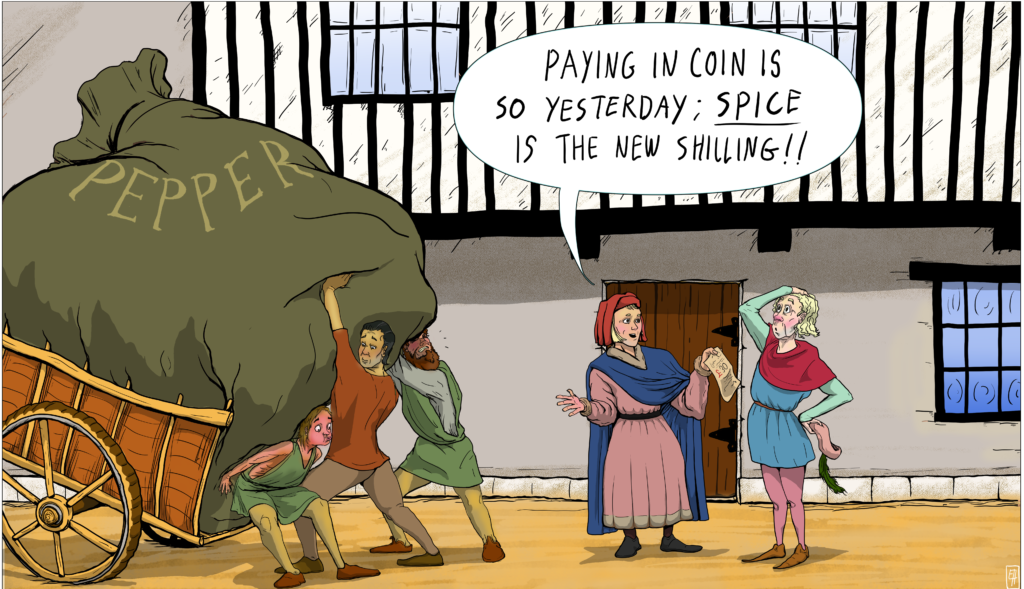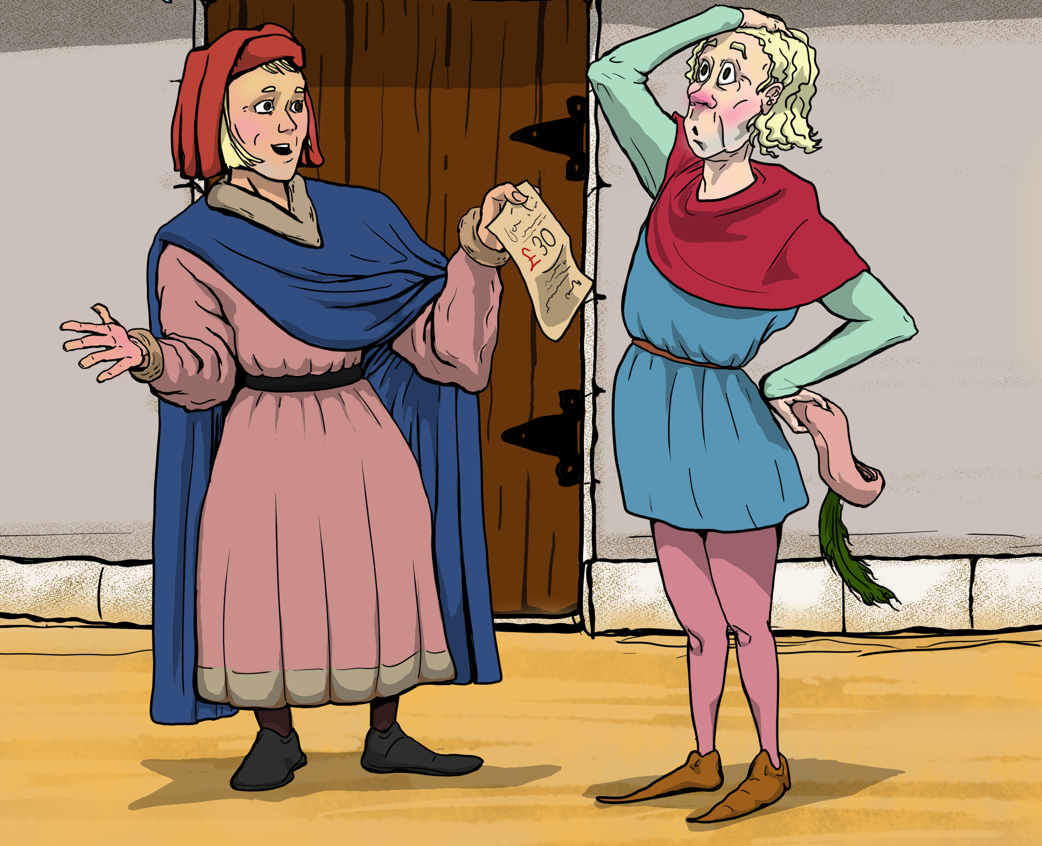
Money need not be metallic! Spice did serve as a form of money, from the 10th to the 14th century. It’s easy to imagine that pepper was bartered (traded for goods without following a set standard of value), yet economic historians have found that spice was used as a monetary instrument. Though coins were also being used, periods of scarcity where coins were not as plentiful did occur, and using coins were at times cumbersome. While it is clear that our comic’s depiction of pepper-as-money is certainly not quite so efficient, it should be remembered that spice was precious, durable, uniform, and retained value beyond the laws and customs of whatever land it was being traded in. Thus, you might have seen English knights being paid in pepper by Florentine merchants – without complaint!
We referenced in this post Marc Bloch’s article, “Natural Economy or Money Economy? A False Dilemma,” from Early Medieval Society, edited by Sylvia Thrupp.
This is the second post of Medieval A-musings, the official comic strip of Fordham’s Center for Medieval Studies! Stay tuned for monthly posts and follow us at our Instagram.

